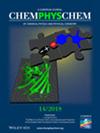EXPLORATION OF OPTIMISATION STRATEGIES FOR LOCKING THE SULFUR IN 2D LAYERED/ POLYMER‐ENVELOPED CATHODE COMPOSITE FOR HIGH POWER Li‐S BATTERIES
IF 2.3
3区 化学
Q3 CHEMISTRY, PHYSICAL
引用次数: 0
Abstract
In Lithium sulfur (Li‐S) batteries the sulfur host material is a significant area of research that could impart enhanced conductivity and alleviate the shuttling of polysulfides. In the present study, graphene oxide‐ sulfur, GOS was synthesized in melt diffusion method by exploring the two different strategies: Ambient (G2‐M) and Inert (G2‐T) conditions. Within the cathode, efficient storage of S with sufficient space in GO interlayers was outperformed by G2‐T method. Further with PEDOT nanostructures enveloped by oxidative polymerisation proves to be a robust conductive layer and an adsorbing agent. It is evidenced physic chemically by XRD, FTIR, TGA, HR‐SEM. Moreover, in addition to the supporting studies, high binding energies at 168.3 and 169.5 eV confirms the superior performance for PEDOT/GO‐S (G3T) as best cathode within the system. The electrochemical behaviour of G3‐T possess very low cell impedance with an excellent cyclic reversibility in CV during (de)lithiation process. At 0.1 C, an initial discharge capacity of 868 mAh g‐1 has been achieved confirming a high catalytic activity with a low polarisation potential of (∆E=0.25) inducing fast reaction kinetics. Thus potential locking of sulfur under inert condition is explored with a proven OCV of 2.3 V with red LED glow.探索用于大功率锂离子电池的二维层状/聚合物显像对偶元件中锁住硫的优化策略
在锂硫(Li-S)电池中,硫宿主材料是一个重要的研究领域,它可以增强导电性并缓解多硫化物的穿梭问题。在本研究中,通过探索两种不同的策略,采用熔融扩散法合成了氧化石墨烯-硫(GOS):环境(G2-M)和惰性(G2-T)条件。在阴极中,GO2-T 方法能在 GO 夹层中留出足够的空间,从而更有效地储存硫。此外,氧化聚合包裹的 PEDOT 纳米结构被证明是一种坚固的导电层和吸附剂。XRD、傅立叶变换红外光谱、TGA、HR-SEM 都证明了这一点。此外,除了辅助研究外,168.3 和 169.5 eV 的高结合能也证实了 PEDOT/GO-S (G3T) 作为系统内最佳阴极的卓越性能。G3-T 的电化学行为具有极低的电池阻抗,在(脱)锂化过程中具有极佳的 CV 循环可逆性。在 0.1 摄氏度的条件下,初始放电容量达到 868 mAh g-1,这证实了在低极化电位(∆E=0.25)诱导快速反应动力学的情况下,G3-T 具有很高的催化活性。因此,在惰性条件下对硫的电位锁定进行了探索,经证实 OCV 为 2.3 V,并伴有红色 LED 发光。
本文章由计算机程序翻译,如有差异,请以英文原文为准。
求助全文
约1分钟内获得全文
求助全文
来源期刊

Chemphyschem
化学-物理:原子、分子和化学物理
CiteScore
4.60
自引率
3.40%
发文量
425
审稿时长
1.1 months
期刊介绍:
ChemPhysChem is one of the leading chemistry/physics interdisciplinary journals (ISI Impact Factor 2018: 3.077) for physical chemistry and chemical physics. It is published on behalf of Chemistry Europe, an association of 16 European chemical societies.
ChemPhysChem is an international source for important primary and critical secondary information across the whole field of physical chemistry and chemical physics. It integrates this wide and flourishing field ranging from Solid State and Soft-Matter Research, Electro- and Photochemistry, Femtochemistry and Nanotechnology, Complex Systems, Single-Molecule Research, Clusters and Colloids, Catalysis and Surface Science, Biophysics and Physical Biochemistry, Atmospheric and Environmental Chemistry, and many more topics. ChemPhysChem is peer-reviewed.
 求助内容:
求助内容: 应助结果提醒方式:
应助结果提醒方式:


